Unit 7 Know Our World.Lesson 40 Body Language.课件
文档属性
| 名称 | Unit 7 Know Our World.Lesson 40 Body Language.课件 | 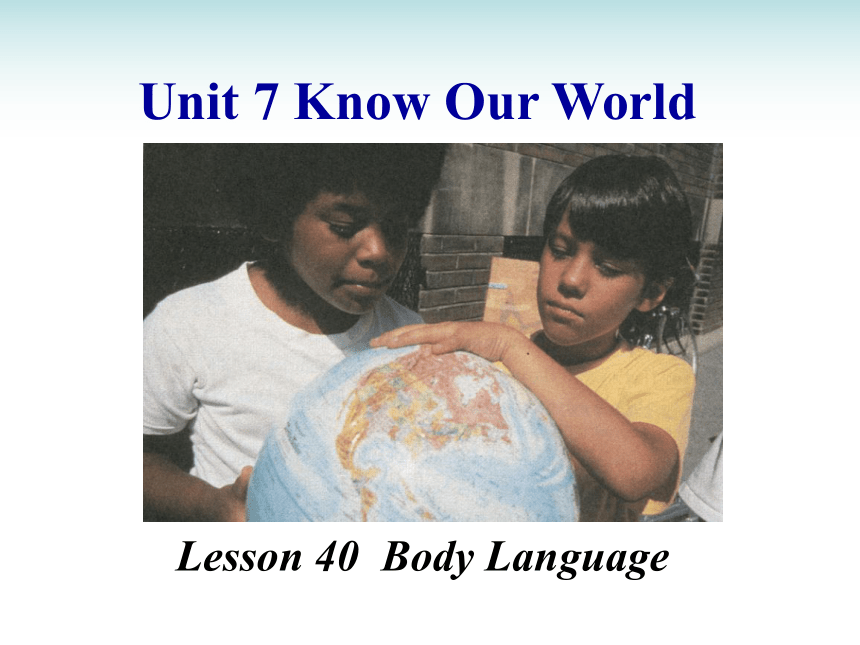 | |
| 格式 | zip | ||
| 文件大小 | 3.4MB | ||
| 资源类型 | 教案 | ||
| 版本资源 | 冀教版 | ||
| 科目 | 英语 | ||
| 更新时间 | 2018-04-12 20:38:35 | ||
图片预览

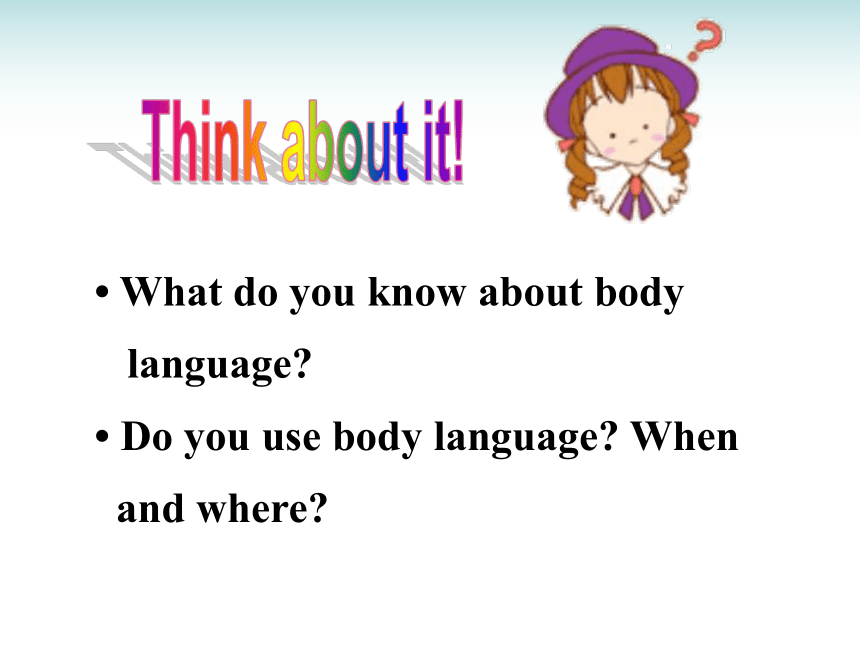
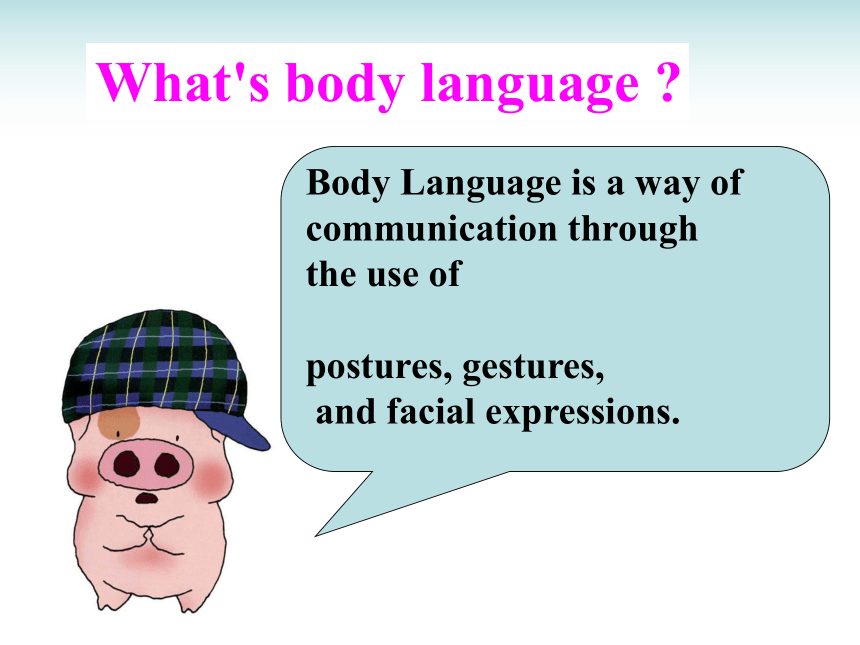
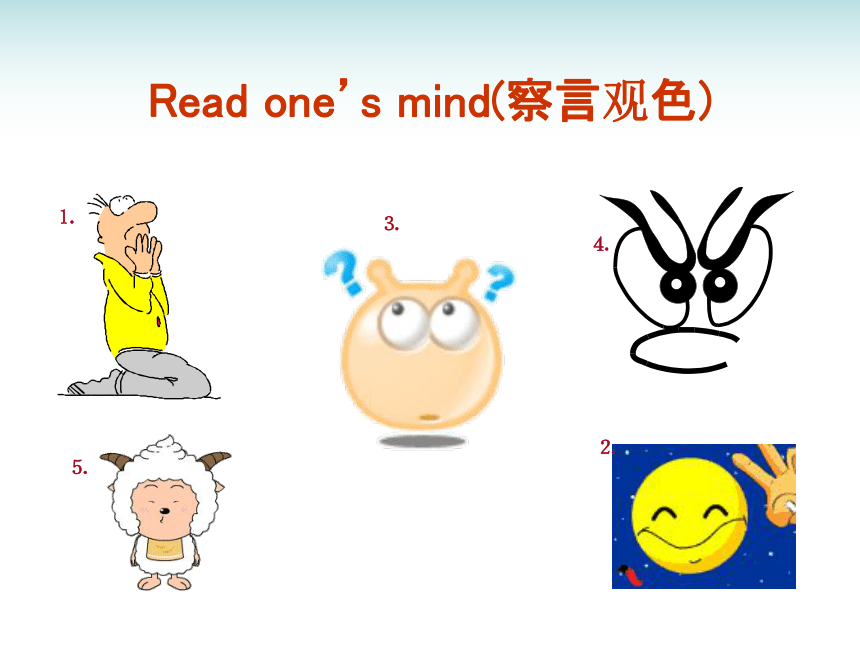
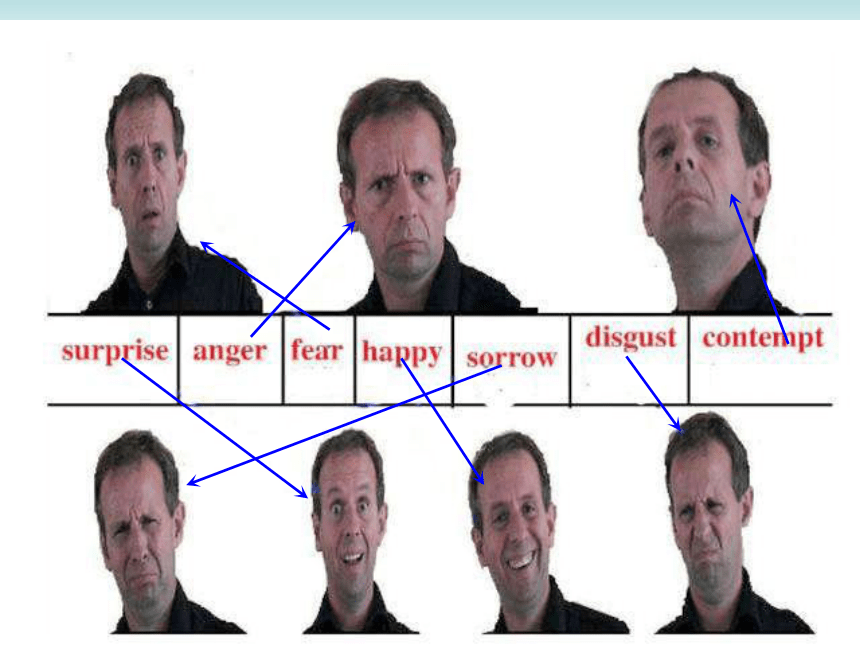
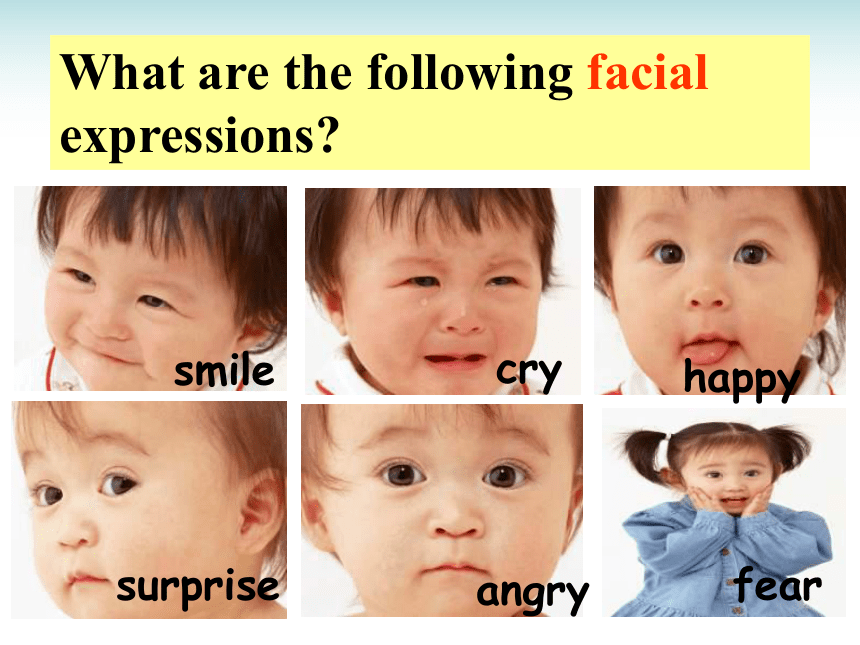
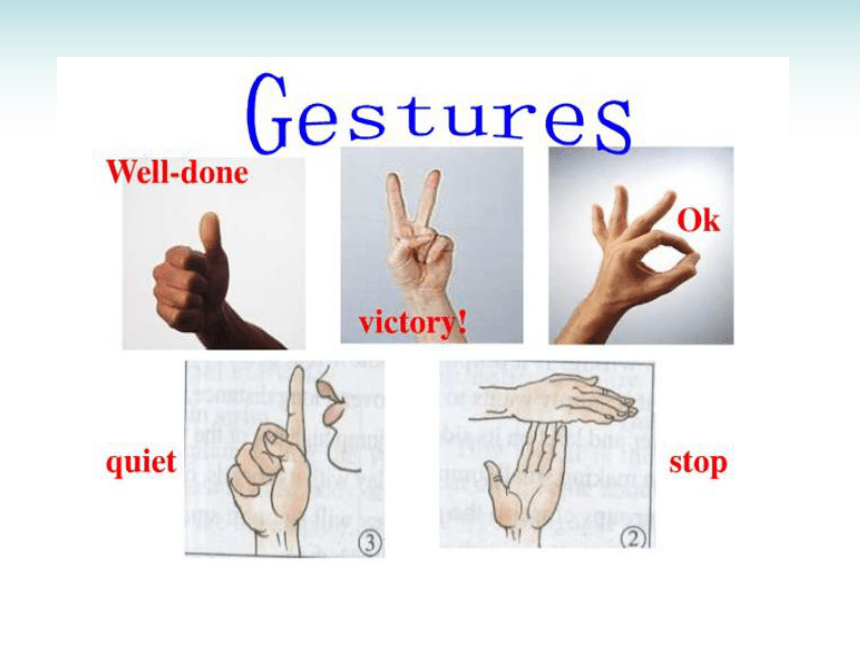


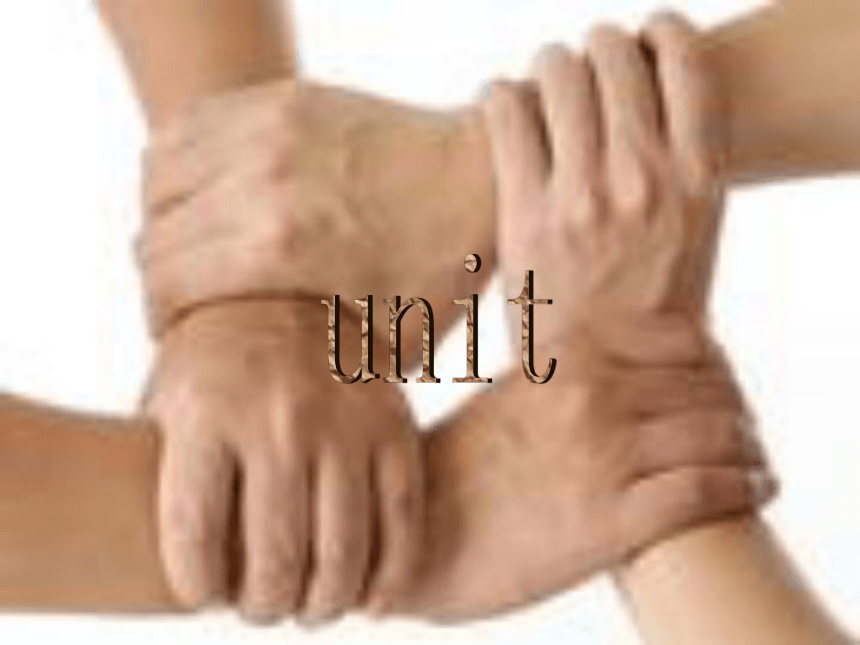

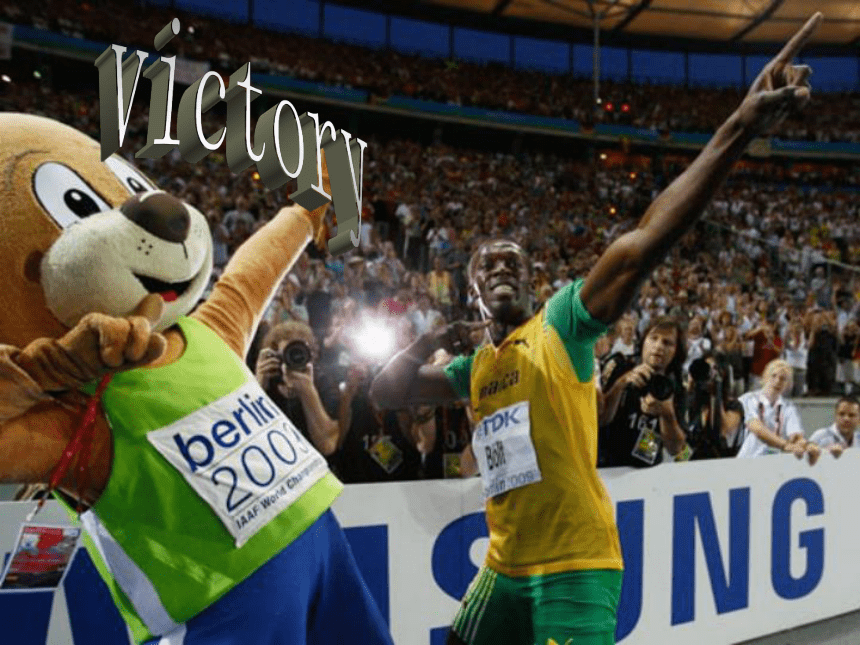
文档简介
课件32张PPT。Unit 7 Know Our WorldLesson 40 Body LanguageThink about it!? What do you know about body
language?
? Do you use body language? When
and where?What's body language ?Body Language is a way of
communication through
the use of
postures, gestures,
and facial expressions.
Read one’s mind(察言观色) ⒈⒉⒊⒋⒌smilecrysurpriseangryhappyfearWhat are the following facial expressions?GesturesGestures are widely used in our daily life.We shake hands everyday greeting people,we use different guestures to show our feelings.Such as this picture, it shows ‘love’ to people.competeunitfriendshipAnd this one…victoryAnd this…NO!Words & expressionsListen and read. In China and abroad, people sometimes communicate without speaking. How do they do this? They use body language. But body language is not the same in all cultures. In China and some other countries, friends shake hands to greet each other. They may be new friends or old, but they shake hands to show friendship and trust. In some Europeancountries, people kiss each other on both cheeks. It’s another way to show friendship and love.
In India, when people nod their heads, they mean “no”. And when people shake their heads, they mean “yes”. But in most other countries, these things mean the opposite.
A thumbs-up means “okay” or “well done” in most cultures. In Australia, however, it is not polite. In Japan, it means “five”, and in Germany, it means “one”. In most places, people point to things with their fingers. But in some places, people point with their lips. They think it's rude to point with a finger.
When Italians wave goodbye, it may look like “Come here!” to Americans. But the American goodbye wave looks like “no” in many parts of Europe and South America. One body language is the same all around the world: a smile. Try it,and you’ll see! Culture Tip Culture refers to the beliefs, way of life, art and customs that are shared and accepted by people in a particular society. The world has many different cultures. We should learn and respect different culrures.Language pointsIn China and some other countries, friends
shake hands to greet each other.
在中国和一些其他国家, 朋友们(通过)握手
(的形式)来互相打招呼。
shake hands 意为“握手”,shake hands with sb.
意 为“和……握手”。例如:
The two men shook hands with each other.
那两个人互相握手。
注意:握手的动作至少要两只手同时发生,所
以 hands —定要用复数。2. But in most other countries, these things mean the opposite.
但是在大部分其他国家,这些事情有着相反的含义。
mean the opposite意为“含义是相反的”。 Read the lesson and write true (T) or
false (F).Let’s Do It!1In some European countries, people like to kiss each other to show friendship and love.
( )
2. Nodding your head means “yes” and shaking your head means “no” everywhere in the world. ( )TF3. A thumbs-up means “well done” in Germany. ( )
2. When Americans wave goodbye,it looks like “no” in some European countries. ( )FT Read the lesson again and complete the
table.2 in China and some other countrieskissnoin Indiain Australiain Germany Fill in the blanks with the words in this
lesson. The first letter is given.3His mother k____ him goodbye every morning
when she leaves for work.
2. A: What do you do when you meet new friends?
B: I say hello and s_____ hands with them.
3. If you agree, please n___ your head.
4. Italy is a E________ country. It has a long history.
5. It’s p_____ to say “thank you” when someone helps you.isseshakeoduropeanoliteTime for Reflection body language
shake hands 肢体语言
握手Exercise( ) 1. Could you please ____ this afternoon?
ring me up B. ring up me
C. call to me D. call up me
( ) 2.We did a lot of things ____ them.
A. different from B. differently from
C. different to D. difference from
( ) 3.—Hello! May I speak to the headmaster?
-- Hold on, please. “hold on” means:
A. speak louder B. wait a moment
C. call again D. speak outABBChoose the best answers:( ) 4. Have you got any books ____ science?
A. on B. of C. for D. at
( ) 5. – Hello! Is _______ Mrs. Read?
-- No, _______ is Ann speaking.
A. this, that B. that, this C. this, this D. she, she
( ) 6. I’m very sorry that I don’t have _____________ to
tell you.
A. something new B. anything new
C. new something D. new anythingABB Please make a table(表格), list the different body language in different countries we learnt today, compare(对比) them.Homework
language?
? Do you use body language? When
and where?What's body language ?Body Language is a way of
communication through
the use of
postures, gestures,
and facial expressions.
Read one’s mind(察言观色) ⒈⒉⒊⒋⒌smilecrysurpriseangryhappyfearWhat are the following facial expressions?GesturesGestures are widely used in our daily life.We shake hands everyday greeting people,we use different guestures to show our feelings.Such as this picture, it shows ‘love’ to people.competeunitfriendshipAnd this one…victoryAnd this…NO!Words & expressionsListen and read. In China and abroad, people sometimes communicate without speaking. How do they do this? They use body language. But body language is not the same in all cultures. In China and some other countries, friends shake hands to greet each other. They may be new friends or old, but they shake hands to show friendship and trust. In some Europeancountries, people kiss each other on both cheeks. It’s another way to show friendship and love.
In India, when people nod their heads, they mean “no”. And when people shake their heads, they mean “yes”. But in most other countries, these things mean the opposite.
A thumbs-up means “okay” or “well done” in most cultures. In Australia, however, it is not polite. In Japan, it means “five”, and in Germany, it means “one”. In most places, people point to things with their fingers. But in some places, people point with their lips. They think it's rude to point with a finger.
When Italians wave goodbye, it may look like “Come here!” to Americans. But the American goodbye wave looks like “no” in many parts of Europe and South America. One body language is the same all around the world: a smile. Try it,and you’ll see! Culture Tip Culture refers to the beliefs, way of life, art and customs that are shared and accepted by people in a particular society. The world has many different cultures. We should learn and respect different culrures.Language pointsIn China and some other countries, friends
shake hands to greet each other.
在中国和一些其他国家, 朋友们(通过)握手
(的形式)来互相打招呼。
shake hands 意为“握手”,shake hands with sb.
意 为“和……握手”。例如:
The two men shook hands with each other.
那两个人互相握手。
注意:握手的动作至少要两只手同时发生,所
以 hands —定要用复数。2. But in most other countries, these things mean the opposite.
但是在大部分其他国家,这些事情有着相反的含义。
mean the opposite意为“含义是相反的”。 Read the lesson and write true (T) or
false (F).Let’s Do It!1In some European countries, people like to kiss each other to show friendship and love.
( )
2. Nodding your head means “yes” and shaking your head means “no” everywhere in the world. ( )TF3. A thumbs-up means “well done” in Germany. ( )
2. When Americans wave goodbye,it looks like “no” in some European countries. ( )FT Read the lesson again and complete the
table.2 in China and some other countrieskissnoin Indiain Australiain Germany Fill in the blanks with the words in this
lesson. The first letter is given.3His mother k____ him goodbye every morning
when she leaves for work.
2. A: What do you do when you meet new friends?
B: I say hello and s_____ hands with them.
3. If you agree, please n___ your head.
4. Italy is a E________ country. It has a long history.
5. It’s p_____ to say “thank you” when someone helps you.isseshakeoduropeanoliteTime for Reflection body language
shake hands 肢体语言
握手Exercise( ) 1. Could you please ____ this afternoon?
ring me up B. ring up me
C. call to me D. call up me
( ) 2.We did a lot of things ____ them.
A. different from B. differently from
C. different to D. difference from
( ) 3.—Hello! May I speak to the headmaster?
-- Hold on, please. “hold on” means:
A. speak louder B. wait a moment
C. call again D. speak outABBChoose the best answers:( ) 4. Have you got any books ____ science?
A. on B. of C. for D. at
( ) 5. – Hello! Is _______ Mrs. Read?
-- No, _______ is Ann speaking.
A. this, that B. that, this C. this, this D. she, she
( ) 6. I’m very sorry that I don’t have _____________ to
tell you.
A. something new B. anything new
C. new something D. new anythingABB Please make a table(表格), list the different body language in different countries we learnt today, compare(对比) them.Homework
同课章节目录
- Unit 1 Spring Is Coming
- Lesson 1 How's the weather?
- Lesson 2 It's Getting Warmer!
- Lesson 3 Sun Is Rising
- Lesson 4 The Spring City
- Lesson 5 Babysitting on a Spring Day
- Lesson 6 Stories about Spring
- Unit 2 Plant a Plant
- Lesson 7 Planting Trees
- Lesson 8 Why Are Plants Important?
- Lesson 9 Gardening with Mary
- Lesson 10 Make Your Garden Grow!
- Lesson 11 Amazing Plants
- Lesson 12 Danny's Plant
- Unit 3 Animals Are Our Friends
- Lesson 13 Danny's Big Scare
- Lesson 14 Amazing Animals
- Lesson 15 The Zoo Is Open
- Lesson 16 The Pear Escaped
- Lesson 17 Save the Tigers
- Lesson 18 Friendship Between Animals
- Unit 4 The Internet Connects Us
- Lesson 19 How Do You Use the Internet?
- Lesson 20 A Computer Helps!
- Lesson 21 Books or Computers?
- Lesson 22 Travel on the Internet
- Lesson 23 The Internet--Good or Bad?
- Lesson 24 An E-mail to Grandpa
- Unit 5 Buying and Selling
- Lesson 25 Raising Money
- Lesson 26 Cookies, Please!
- Lesson 27 Business English
- Lesson 28 Ms. Liu's Great Idea
- Lesson 29 How to Push a Product
- Lesson 30 A Cookie Sale
- Unit 6 Be a Champion!
- Lesson 31 Don't Fall, Danny
- Lesson 32 My Favourite Record
- Lesson 33 2800 Years of Sports
- Lesson 34 Modern Olympics
- Lesson 35 The Dream Team
- Lesson 36 Classroom Olympics
- Unit 7 Know Our World
- Lesson 37 Let's Learn Geography!
- Lesson 38 The World Is a Big Place
- Lesson 39 Ring Up or Call?
- Lesson 40 Body Language
- Lesson 41 A Class of the World
- Lesson 42 North America
- Unit 8 Save Our World
- Lesson 43 Let's Clean Up!
- Lesson 44 Environment Clubs
- Lesson 45 Let's Sort Garbage!
- Lesson 46 Protect Our Environment
- Lesson 47 Connected to Nature
- Lesson 48 Garbage Is Interesting!
